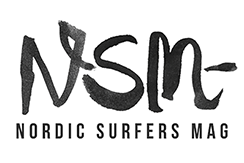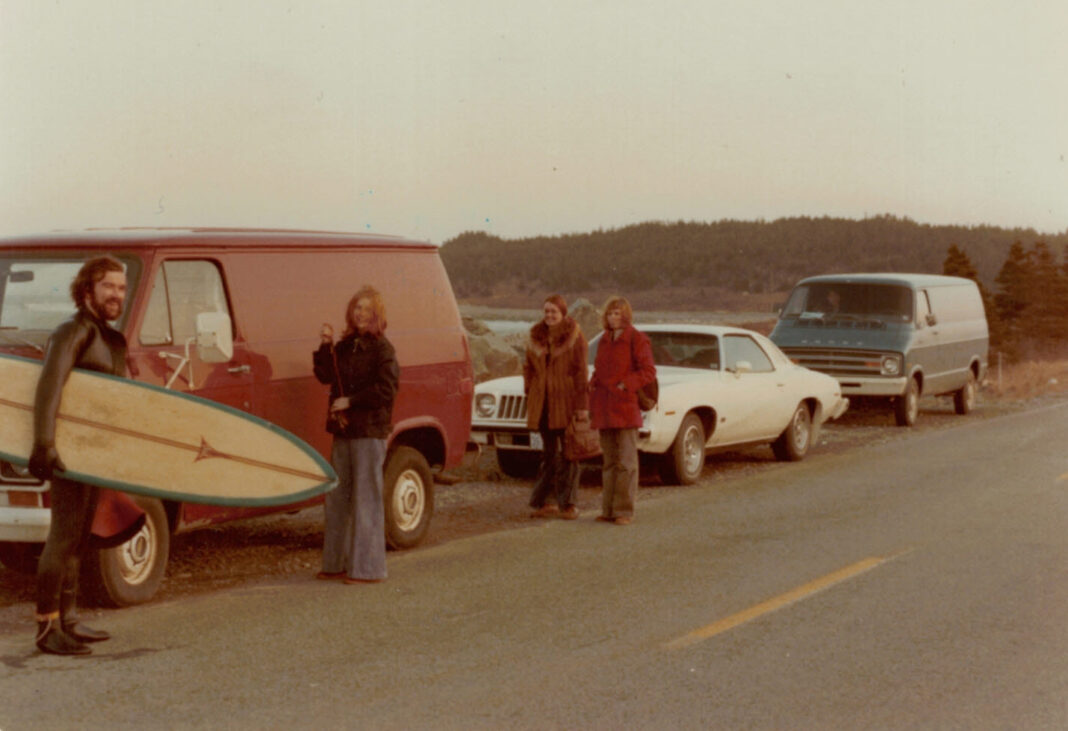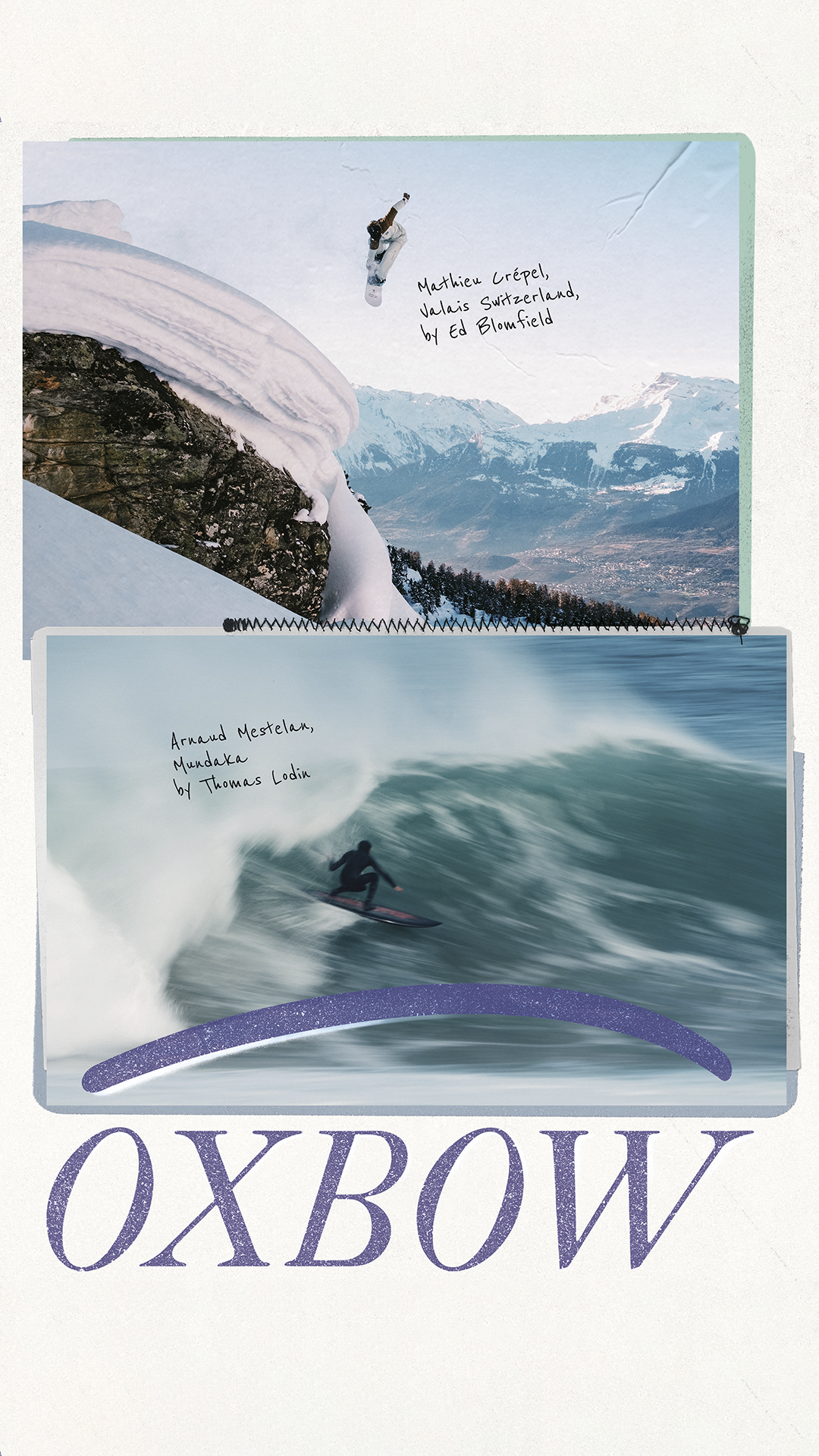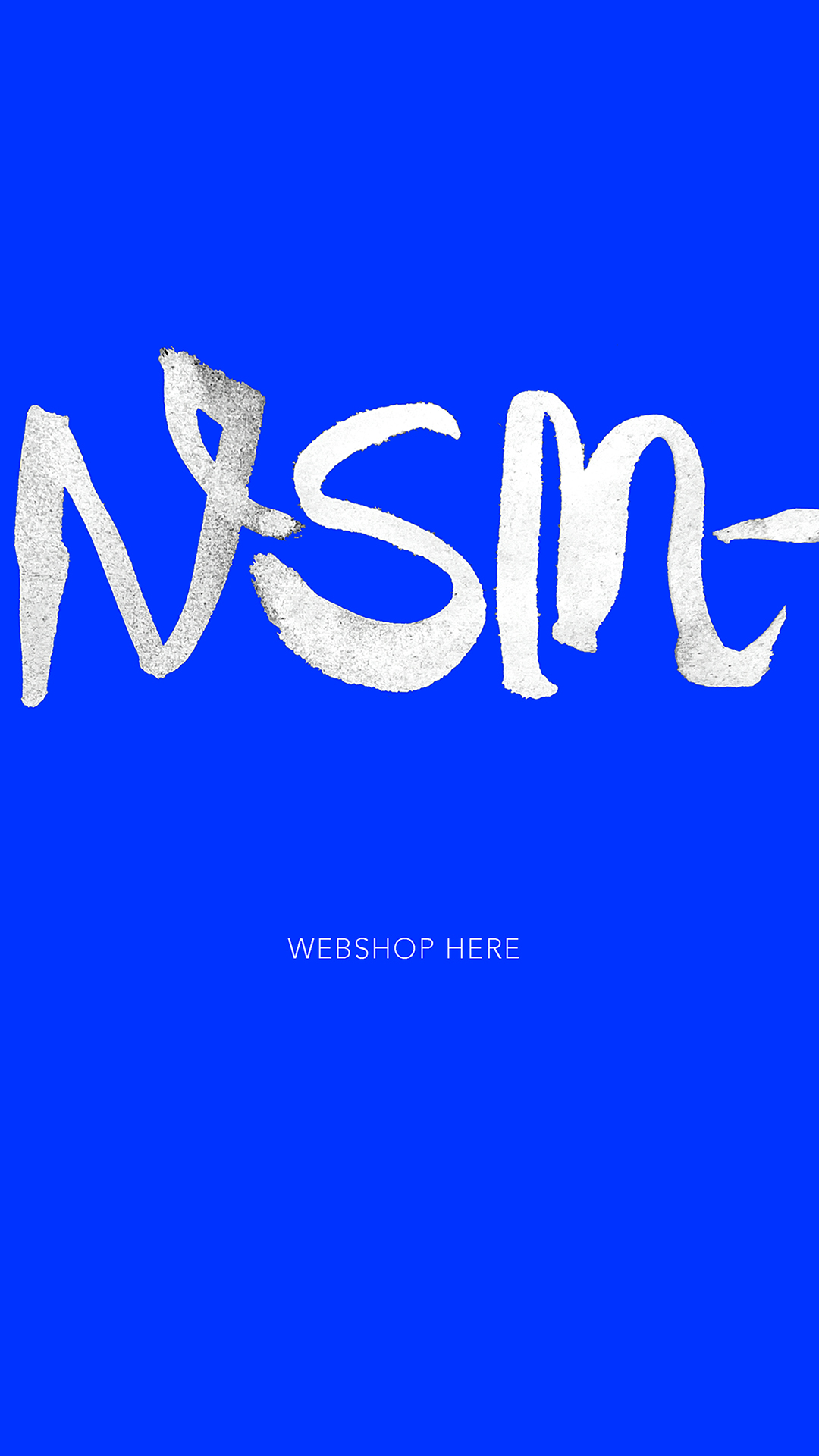Toby Balch, a youthful 57-year-old marine biologist from Halifax, can talk surf stories for hours. His repertoire’s finest might be the one when he came close, but failed, to find a surfable beach in a province littered with them. It was 1983, late autumn. Balch, a high school sophomore and an avid skier, decided he was teaching himself to surf that weekend. He drove out of Halifax headed to the northeast and arrived on what is known as Nova Scotia’s Eastern Shore—the foggy, thinly-populated coastline nestled between Halifax’s outskirts and Cape Breton Island. As soon as he saw the ocean, about thirty minutes outside the city, Balch pulled over. There laid a long, cobblestone bay, known as Stoney Beach, with a freshwater lake connecting to the sea at its southwest edge. Clad in a rental wetsuit so stiff he had to baby powder his way in, on some hardware-store styrofoam board, Balch ventured out. Although Stoney Beach does get waves, its sandbar is so riddled by deep trenches dug by the lakewater gushing out to the ocean that it usually fails to produce much more than a mayhem of Frankenstein peaks. Balch loved it. He came back every weekend that fall.
Two months later, a surfer driving by saw Balch baby-powdering his arms, about to paddle out—at Stoney Beach? The surfer honked, made eye contact with Balch, and energetically pointed ahead. Curious, Balch got back in his car and drove five hundred meters up and down a tall headland. On the other side, lo and behold, was Lawrencetown Point, Nova Scotia’s equivalent to First Point Malibu. It broke in long, organized lines that day, as it often did. Out in the water was half of Nova Scotia’s surfing population—about six people. Timidly, Balch joined them. They made gentle fun of him at first, aware that he was the kid who had, literally, missed the point. In fact, Balch had missed not only the Point but a gateway to the province’s densest wave agglomeration—a stretch of coast Balch now refers to as the Eastern Shore’s “golden ten kilometers.” The coinage feels apropos, especially coming from a man who initially missed the El Dorado by mere meters.
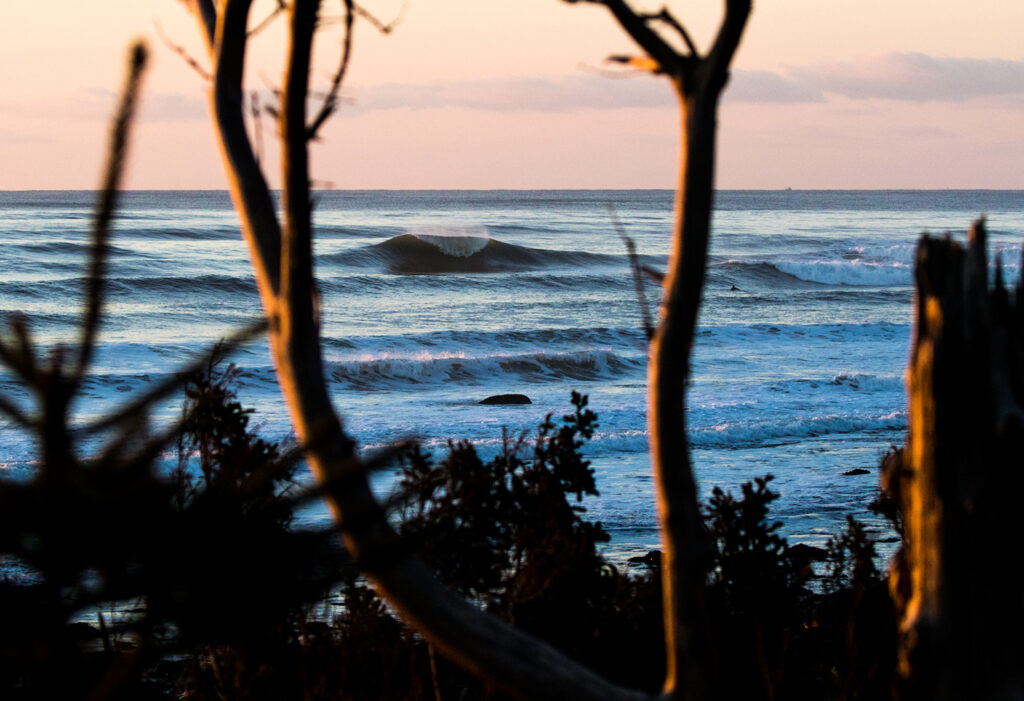
Photo: Marcus Paladino
I also missed it at first, and by even less than Balch. I was coming not from Halifax but from Tofino, a surf town on British Colombia’s Pacific Coast, 7,000 kilometers away. I reached Lawrencetown one August afternoon at the cost of a week-long cross-Canada drive. After hazy days of dreary prairies, I glimpsed the ocean for the first time at Stoney Beach, like Balch forty years earlier. But instead of pulling over, I drove up the hill, whence I presumed I’d get a better view of Big Blue; which I got, and then some. At the foot of the clay cliff, a left-hand point reeled interminably in the sun-drenched afternoon. If Balch, as a novice, had missed Lawrencetown Point, I was told later that many of the guys who poked fun had themselves, for many years, neglected this left-hand point that breaks on the opposite side of their wave-giving headland—an unknown yang to their beloved yin. And it was apparently still the case, as it reeled that day in total emptiness. It took little time, and no baby powder at all, to slip into my wetsuit. I found my way down the perpendicular cliff and surfed myself exhausted: four hours of lapping all alone in water that had the reassuring warmth of some amniotic fluid. After which I felt nothing short, naturally, of reborn.
I had come to the East Coast in an attempt to escape surfing’s bondage. The relentless waves at beaches around Tofino—a god-sent blessing at first—were becoming a trap: they kept you a hostage to their consistency, a consistency that consisted mostly of subpar, juiceless beach breaks. Still—for years I scoured those beaches every single morning, and never missed an afternoon. More and more, though, I felt like a junky whose pusher’s bad dope induces nothing but a nervous state of need even when in the act of using.
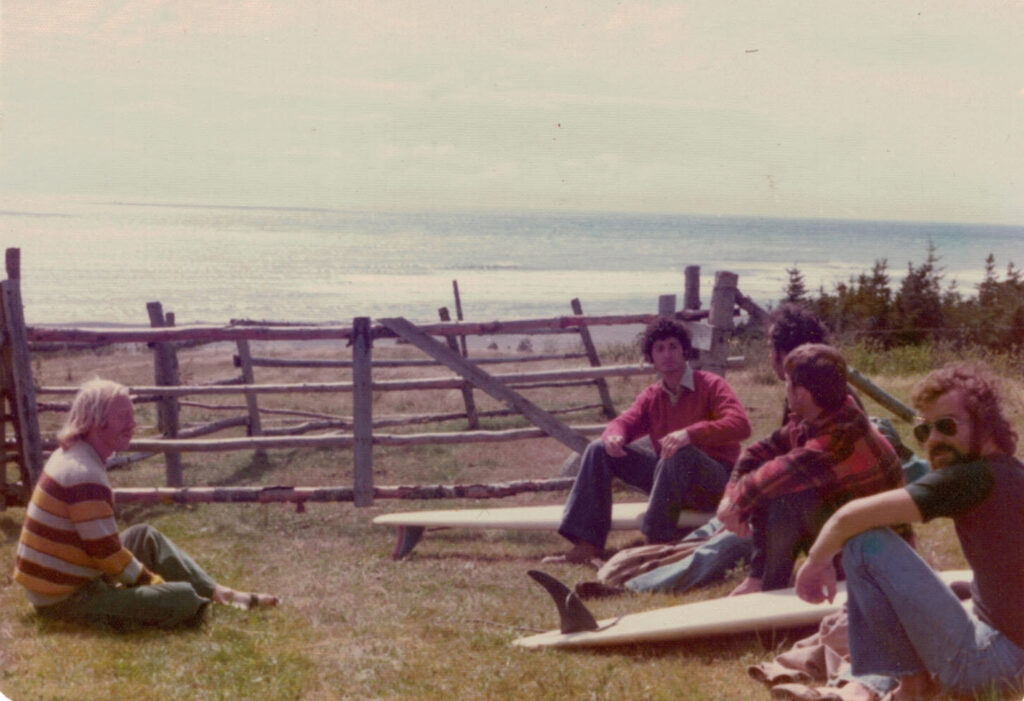
From the outset, I’d believed that if you surfed, every other aspect of life had to be shunned. Which I’d done: after graduating from university in my hometown, Montreal, I’d renounced a career in my field for a minimum-wage surfshop job; but mostly, indeed, to spend every waking hour at the beach waging a pitiless war on my kookdom. Years dissolved that way. At its peak, my disconnection from the world had been caricatural—living wholly out of touch with anything happening outside the invisible, impermeable walls of surf-tranced Tofino. I’d found out about Brexit three weeks after the separation, and only because an ad on a forecasting app made mention of it. I didn’t think much of the whole deal at the time—Cornwall would still get southwest swells in the fall, so why all the fuss?
But at some point during my exile in Tofino, I had started to doubt it was in fact healthy to be this committed to anything. Twice I’d had panic attacks while on shift at the surfshop because I couldn’t surf on a morning when waves were, for once, splendid. Hiding in the staff bathroom, trying to breathe deeply, choking back tears unsuccessfully, I thought of quitting on the spot—not surfing, but the surf shop. I did, shortly after, and got an evening job at an upscale restaurant, where moneyed tourists asked me ten times a night how long I’d lived in town. On tough nights, every “four years” I replied seemed to add up, as to feel like by the end of the evening I’d lived in Tofino for forty full, unproductive years. I had liked the surfshop better; but not having every minute of every day free to surf was emotionally unbearable.

Around then, a quote from a Canadian surf mag looped in my head. It was self-reflective and somewhat profound, offbeat for that sort of publication: “Sometimes, I really wish I wasn’t so obsessed with surfing.” They were the words of Pete Devries, a Tofino native and probably the best surfer Canada’s ever grown. A naturally gifted athlete, Devries had polished and pushed his surfing to a level that beckoned veneration. Light on his feet, small but powerful, a capable aerialist, preternaturally deft in the barrel, fearless at hair-rising slabs, he used his surfboard like a chisel, methodically, artfully sculpting ridden waves into arresting moments, along with a certitude that he was part of the planet’s cold-wave riders elite. Surfing a lineup with him was electrifying, and humbling, like witnessing a striking natural event—a sandstorm, a tornado, an asteroid, Devries spinning miles above the lip of a foot-high wavelet. He’d carved an enviable niche for himself as a neoprened remote-slab surveyor, featured in Taylor Steele’s Innersection and often printed on glossy paper travelling the entrails of undisclosed barrels with snowy peaks for a backdrop. I don’t know if the guy ever had to work. I’m quite sure he never wept in a surf shop bathroom because he was missing out on solid surf. He basically lived on boats, on planes, on highways, on logging roads—all on Hurley’s dime—taking him straight to pristine surf. And it was his scorching obsession, however much he wished to tone it down, that had landed him there. Where was mine taking me?
Professor, surfer and prolific author Lesley Choyce left his natal New Jersey in the 1970s to settle at Lawrencetown Beach. “Even after living here for more than twenty years,” he wrote in a 2006 essay about his adopted home, “I am not one hundred percent sure that Nova Scotia truly exists.” Although I am positive Nova Scotia veritably exists, I know what he means. This is a place shaped by strange contradictions, made hugely appealing by things it doesn’t have—surfing crowds, rampant development; money. Those who love Nova Scotia—Choyce often adores it publicly in print—do so with an aqueous nostalgia for the present, as though they could wake up any instant from a dream in which they’d found Shangri-La.
Moving to Nova Scotia, I’d believed Choyce to be the first surfer in the province. “I am not,” he says when I meet him at his book-stuffed office at Halifax’s Dalhousie University, where, at 72, he teaches creative writing part-time. He’s very thin, sits very erect, and his rather soft jawline makes it look like his neck extends all the way to a mass of carob-brown hair. His eyes shine with a cheerfulness that seems to conceal, underneath, a burnished melancholy, the look of a man who stared extensively at the suns of life’s verities without sunglasses. “But it was such a small crew who surfed year-round when I first got here,” he remembers, “you’d go around looking for people to surf with when it was good.”
Choyce has often paid homage to these surf partners in his writing. One memorable surfing story, from 1987’s An Avalanche of Ocean, takes place on New Year’s Day, 1983. The plotline is rudimentary: Choyce and four friends brave the arctic weather to go surfing. Not untypically for that time of year, dense ice pans are choking the lineup, “like the leftovers from somebody’s defrosted freezer.” Midway through the session, one inventive Jimmy Leadbetter decides to ditch his board and clamber up on a giant ice floe just as a set approaches.
According to Choyce’s recounting, Leadbetter caught a wave and surfed it “while standing on the mini-iceberg.”
Four decades later, the man who once used ice as a surfboard stands beside me in his cramped attic. Jim Leadbetter’s house resembles the Seaforth coast where it is niched: vast, full of unsuspected nooks, hidden corners and hard-earned gems. Like this roof attic, accessible by climbing up a sketchy pull-down ladder. The view it offers is worth the peril: an expansive panorama of a coastline ribbed with jutting clay headlands like vertebrae on a spine.
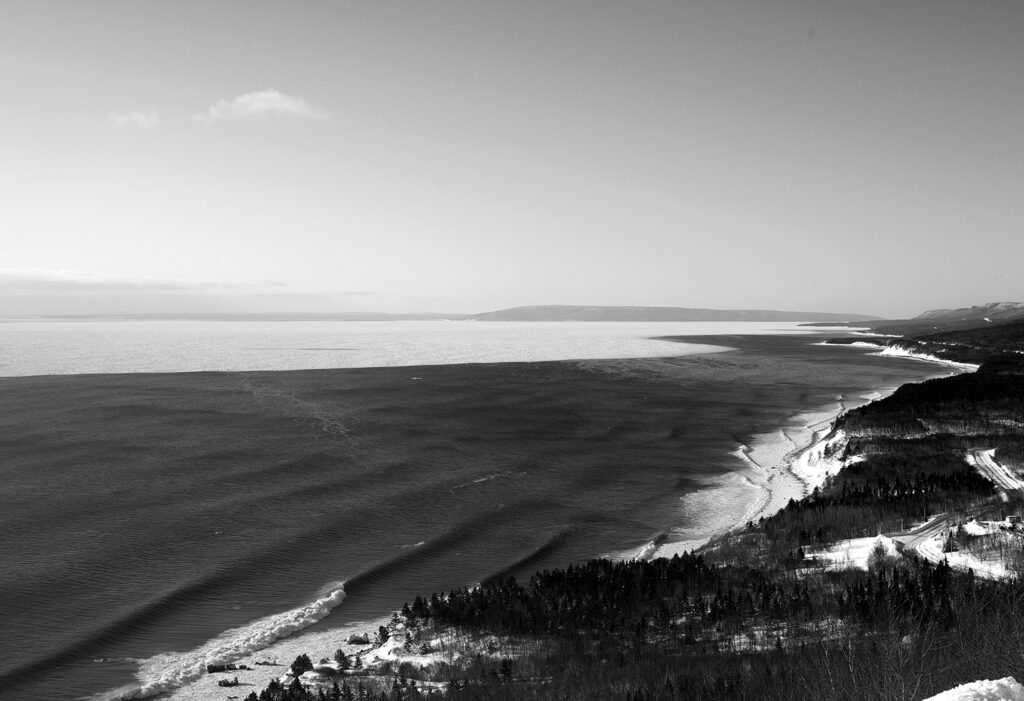
Photo: Scotty Sherin
Leadbetter points out the western edge of a wide, placid bay beyond the road, beyond the pines, and, like a secret, whispers the name of the wave that breaks there. I smile. In Nova Scotia’s surfing circles, this would be the equivalent of pointing upward and murmuring, “This is the sky.” But I know that Leadbetter, who has seen lineups densify since Internet’s inception, believes in old-fashioned secrecy, even he who has given the place a considerable chunk of his life, and whose name is associated with the spot like, say, Tom Curren’s to Rincon. Pointing it out to me is simply a way of saying, “That’s where I invested my time and energy, you see.” These days he still invests a bit of both, but starting in the spring, after the ice has melted.
The attic has three windows, facing different cardinal directions. Leadbetter, who is 74, moves slowly from one to the other. Calmly, he points out landmarks, wave locations, other surfers’ houses. He’s soft-spoken, affable; he talks but doesn’t have a mouth—or if he does, it is deeply buried beneath a thick, drooping mustache. Words ooze out from under it like a soft river, somewhere between a mumble and a lullaby: stories told pell-mell without clear beginnings or ends from a lifetime on this craggy coast. “That reef over there I love. I would never surf it when it’s big though,” he say, pointing straight ahead at the flat gunmetal sea. If the Lawrencetown Headland is the gateway into the Eastern Shore’s “golden ten kilometers,” then the Seaforth Coast laid out before Leadbetter’s attic would be its terminus. And this man standing beside me—he’s average height, solidly built, silver-haired: an aging Mister Anybody—is amongst its most revered pioneer.
Nova Scotia’s surfing genealogy is well delineated, and widely agreed upon. Everyone knows who the second-ever surfer in the province was, or the fourth—that was Leadbetter, circa 1968. The classification has even extended to generations: first generation, second generation—starting with Balch the day he stumbled into members of the first generation, who had been at work for almost two decades by then. Standing atop this oceanic family tree, one name stands conspicuously alone: Roderick Landymore, Nova Scotia’s original surfing settler.
In 1963, Landymore’s father, an Admiral in the Canadian Navy, had just been transferred from the West Coast to the Atlantic Coast, where he settled with his family at Lawrencetown Beach. It is said that his son, sixteen-year-old Roderick, spent wistful afternoons at Lawrencetown Point mind-surfing the waves. He’d seen Gigdget and, while living in progressive British Colombia, whiffs of the Southern Californian surf craze had rambled north enough to enter his mind’s eye. But despite the evident presence of waves in his backyard, he couldn’t surf: finding a surfboard and a wetsuit in 1963’s Nova Scotia was a quest as doomed as seeking a Martini on Mars.
However, on July 7th of that year, Landymore’s dad came home with a present: a
California-shaped longboard, a gift from an American Admiral visiting Halifax, who’d heard of Landymore Junior’s interest in ocean waves. With the first surfboard to enter the province under his arm, Landymore ran to the Point that very afternoon and—presumably— surfed his brains out.
July 7th, 2023. Sixty years later to the day, I am standing on the beach at Lawrencetown Point. Wonky, onshore waves, reeling under a sky the same silver as an iPhone’s back. Does anyone in the small, anonymous crowd out there know that today is an anniversary? Eyes closed, I can see Landymore nimbly sliding down wave after wave, having mind-surfed his way to competency, with no audience but the sun, an armada of nimbus to the southwest, and the red-clay headland towering over the scene. I open them and six decades are gone in a flash; a surfer has caught a shoulder-high wedge at the point, carving its flanks with the surgeon’s scalpel precision, the dancer’s consummate economy of movement: Nico Manos. He’s the face, until recently magazine-featured and Quiksilver-sponsored, of Nova Scotia’s hard-working third surfing generation.
After he’d christened a coastline with the blessings of a surfboard, Rod Landymore vanished. It happened sometime in the 1980s. Before then, though, he’d generously spread the stoke—the first five surfers in the province were introduced to the ocean by Landymore himself, including Jim Leadbetter, as well as one college kid from New Brunswick named Bernie Schelew. Schelew, who is now 70 years old and movie-actor handsome, would become Landymore’s surfing partner for most of the 1970s. He recalls a tension at the core of Landymore’s life, brought on by surfing. Then in his late twenties, married, with two kids, still living at the Lawrencetown family homestead with the military father—the one who’d given him his first surfboard—and a conservative mother, Landymore spent far too much time chasing surf. At least according to his family who, Schelew explains, “didn’t like me taking him away from his family responsibilities.” Then, one day, Landymore was gone. First to the States, finishing cardiovascular surgery training, then to Saudi Arabia, sewing the helm of a promising cardiologist career. While the youths he’d mentored into surfers became a close-knit clan, surfing their way through the 1980s and 1990s on a still-empty coast, their onetime surfing guru had moved on like cottonous clouds in the gusty wind.
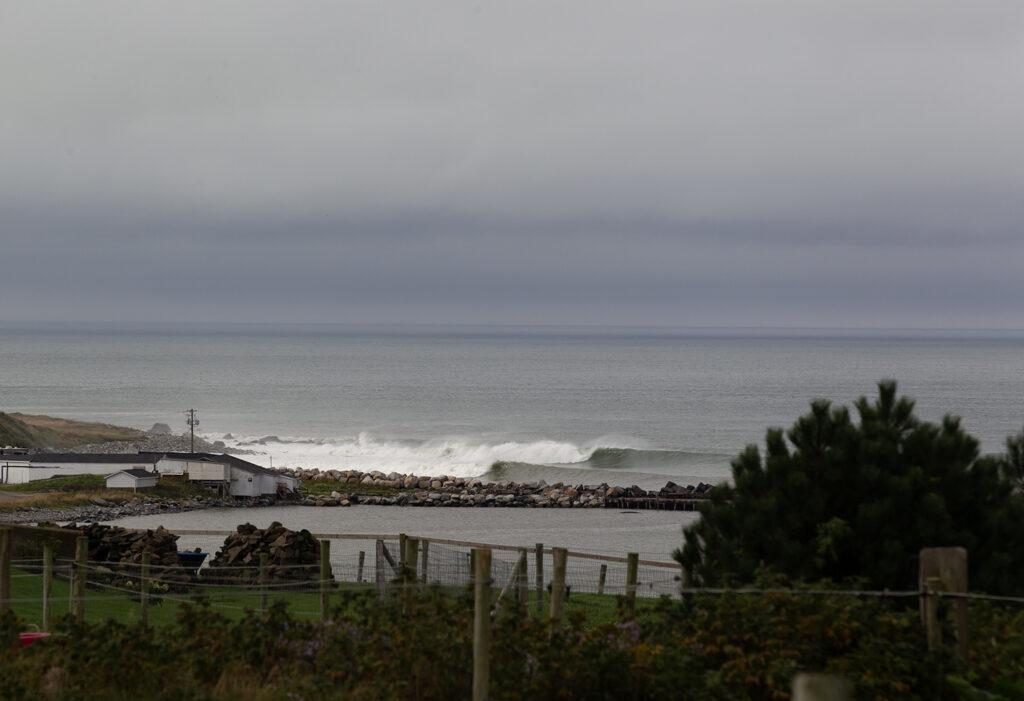
Photo: Scotty Sherin
I can’t help but sense, behind this disappearance, the quintessential waterman’s Hamlet dilemma: To surf, or not to surf. Landymore, for reasons both clear and mysterious, had elected not to; had chosen instead the quotidian comforts and reassuring regularity of a terrestrial life. Whispers have it that he now lives in England, a distinguished heart surgeon, the proud owner of a mantel laden with medical distinctions. Although I don’t understand it, parts of me admire the perfect blaze he’s set on the bridges with his old life.
Before moving to Nova Scotia, I had also considered quitting. Surfing had become all-consuming, in a manner I couldn’t rationalize or even explain to anyone who wasn’t myself—and even that was becoming increasingly problematic. Concerned friends asked what my plans were. They knew I had none other than surfing myself numb day in and day out. One night around a bonfire, digesting another day spent in the Pacific soup—and a copious serving of psilocybin mushrooms—the decision made itself: Nova Scotia. Two days later, I had quit my job, broken my lease and a few promises, packed my station wagon and left Vancouver Island. Driving across the world’s second-widest country, I had time aplenty to visualize the contours of a more balanced existence on the North Atlantic’s temperamental fringes.
And perhaps I found just that. When the Atlantic sleeps, as it does often, I manage to find breathable air outside of the water. I went back to university in Halifax, began baking sourdough bread, and vowed to brush up my Spanish, reading Borges’s untranslated poetry.
When a storm finally delivers waves, you drop everything; and like all things fervently hoped but patiently waited for, they taste just that much better.
My first session at that mysterious left-hand point must have been an omen. Like Balch, who still surfs with adolescent enthusiasm, I stumbled blindly into the unknown. Four hours later, I knew all I needed to know.
I seem to remember every single wave I caught that afternoon, especially the one before last. Coming in choppy from a cross-shore breeze, the wave miraculously glassed out as it reached the shallow rock shelf. It was as though it had rolled in with a bedhead, and, at the speed of a magic trick, slicked its hair back in a pompadour, polished smooth like a stone by eternity’s erosion—all in an instant, under my witnessing eyes. Seeing this transformation moved me, as though this unkempt being beautyfied itself for its ultimate, private encounter with moi. Following the takeoff was a fast section, that I flew past on my trusty two-finner. Then the wave paused when it hit a deeper channel. It had started the race sprinting and now, gasping for air, slowed down to catch a puff. After this brief stutter, it resumed with enough velocity to engage in a heartfelt bottom turn had I wanted to. Instead, I kept a straight line, staying ahead of the ever-pursuing curl, feeling no need to do anything but let this wave carry me onward to its ultimate destination. And so it did. Before starting the lengthy paddle back out, I noticed a backlit silhouette standing at the edge of the cliff. In hindsight, I like to think it was Roderick Landmore, watching me surf a wild point on the edge of the Atlantic, in simple solitude, exactly like he’d done almost 60 years earlier.
Paddling back out, I felt porous, as though covered in tiny openings through which seawater swished and mingled with my most basic constitution. All your questions, especially the unanswerable ones—briefly answered by moments like these. The dropping tide had formed a seaward rip, as strong as a lazy river, which carried me back effortlessly to the lineup. “Couldn’t it be your irreversible time is that river in whose bright mirror Heraticlus read his brevity?” asks Borges in a prophetic poem about the inevitability of death, titled To the One Who is Reading Me; whom he warns immediately after: “Know this: in some way you’re already dead.” But not yet, I thought, seeing another series of waves arise on the horizon.
Words by Jules Sabourin
Archive photos by Victor Ruzgys

Photo: Scotty Sherin

